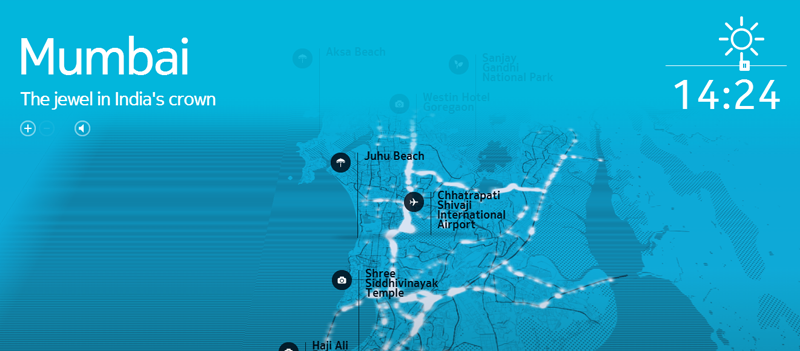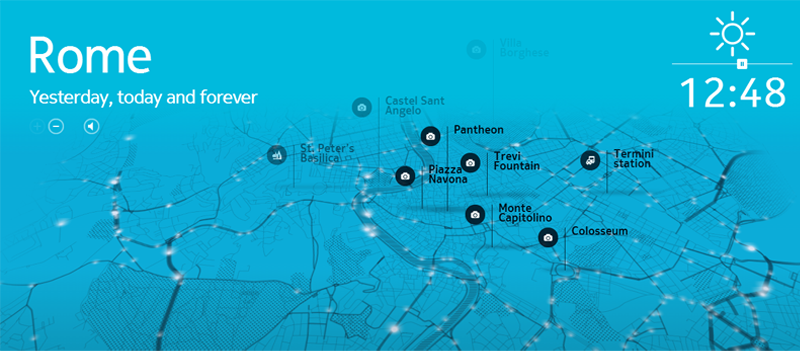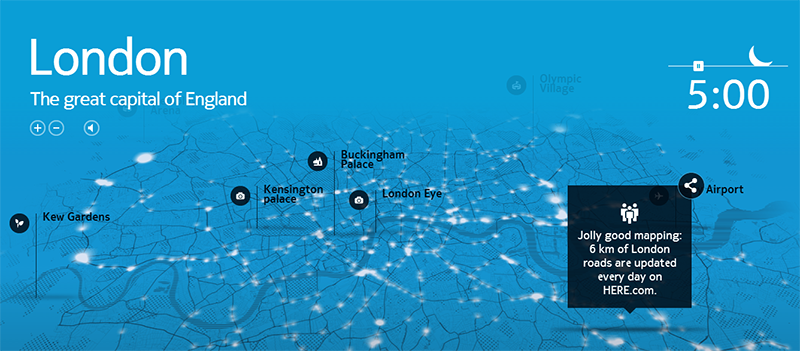Nokia HERE LivingCities

Have a nice day, Habr!
We are on the air again and this time we want to tell you about one interesting project Nokia HERE LivingCities , created jointly by the team of the location service HERE and our friends and partners from the cloud-based service of cartography, analytics and visualization CartoDB .
Many of us are accustomed to the fact that the city is often compared with a living creature - a creature obliged to a person by his birth, but not obeying him, but, on the contrary, subordinating. A creature that has its own character, soul, heart and, most importantly, a complex system of “veins and arteries”: streets, roads, highways, junctions and rings, which allow any city to live and breathe. We decided to find out what the life of the city really is and processed a lot of different data in five cities: London, Chicago, Rome, Helsinki and Mumbai. Thanks to CartoDB, we put all the information received on a special virtual card in the format of daily timelapse.
The data that formed the basis of the project is constantly collected by our HERE platform using the devices connected to it - users' smartphones (of course, anonymously) and our supplier partners, which we already talked about in more detail . The visualization was created using the CartoDB cloud infrastructure using HTML5 to animate geolocation data for specific periods.
The Living Cities project showed that numbers can tell a lot of interesting stories, even about the city that you seemed to know everything about. For example, it turned out that Mumbai sleeps only 2 (!) Hours a day - between one and three nights.

The second place after Mumbai in the total time of activity of its population is held by London, although in this case, most likely, there is nothing unusual: the city lives in the rhythm of a cultural and business capital and therefore wakes up around 5 in the morning. Rome begins to do business a little later, at 7.30 in the morning, which only confirms some stereotypes about the capital of Italy.
One would expect that only in a relatively small city like Helsinki does night fall on schedule, but our experiment shows that Chicago's activity also begins to decline quite early.
There are many other interesting data. For example, we learned that the average speed in London is 24.7 kilometers per hour, and Rome is a real gourmet paradise - there are about 2100 restaurants here.

But what does this data give us? Having looked at the “life” of these cities, their residents will be able to determine the best time to leave their homes for work, and tourists will see areas in which nightlife is in full swing. Organizations can also use this information. For example, in order to choose a place for a business or optimize working hours.

Well, for us, this is a good way to improve our services and try to understand collective behavior. It is reasonable to assume that this is only a small fraction of how this information can be used. But as Reno Marioni of the HERE team says: “We are in the initial stages of considering what we can do with this kind of data. And our project is a beautiful canvas for finding various applications. ”
